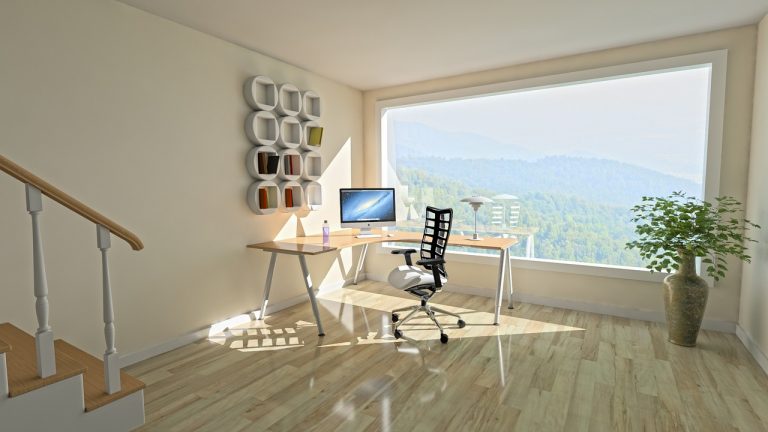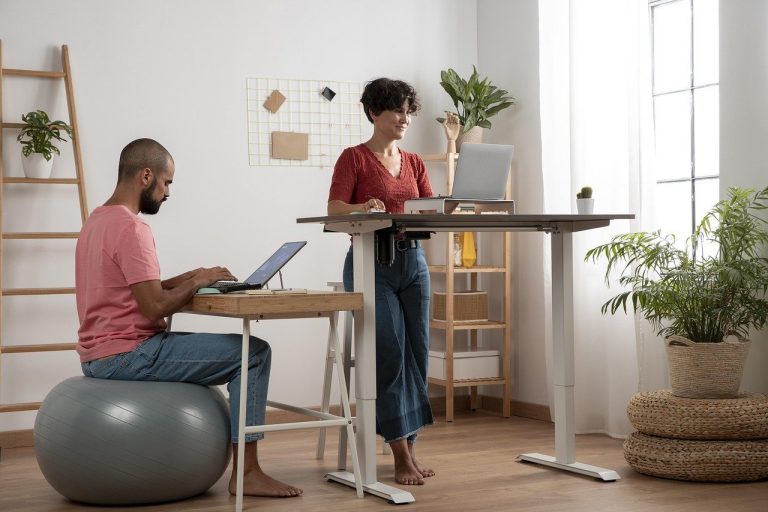Soundproofing Techniques: A Quiet Home Office in a Noisy Building
Working from home can be a challenge, especially if you live in a noisy building or neighborhood. Noise pollution can be a source of distraction and can negatively impact productivity.
In a home office, it is important to create a quiet and peaceful environment that promotes focus and concentration. This is where soundproofing techniques come in handy.
Soundproofing is the process of reducing or eliminating unwanted noise by creating a barrier between the source of the noise and the listener.
In a home office, soundproofing can be achieved through a combination of materials and techniques. Understanding sound dynamics in a home office is the first step towards effective soundproofing.
By using essential soundproofing materials and techniques, such as acoustic panels, soundproof curtains, and weatherstripping, you can significantly reduce noise levels in your home office.
Practical soundproofing solutions for walls, floors, and ceilings include adding mass, damping, and decoupling. Additionally, optimizing home office furnishings for acoustic control can also help reduce noise levels.
Key Takeaways
- Understanding sound dynamics in a home office is essential for effective soundproofing.
- Essential soundproofing materials and techniques include acoustic panels, soundproof curtains, and weatherstripping.
- Practical soundproofing solutions for walls, floors, and ceilings include adding mass, damping, and decoupling.
Understanding Sound Dynamics in a Home Office
The Science of Sound Waves and Transmission
To effectively soundproof a home office, you must understand the science behind sound waves and transmission.
Sound waves are vibrations that travel through the air and other mediums, such as walls and floors. These waves can bounce off surfaces, creating echoes and reverberation.
Sound transmission occurs when sound waves travel through a medium, such as walls, ceilings, and floors, and into another space.
This can be a challenge in a home office, especially if the building is noisy or there are distractions from other people or activities in the surrounding area.
Evaluating Noise Sources and Soundproofing Challenges
Before soundproofing a home office, it is important to evaluate the noise sources and soundproofing challenges.
This can include identifying the types of noise that are present, such as traffic, construction, or voices. You should also identify the areas where sound is most likely to transfer, such as through windows, doors, walls, and floors.
Once the noise sources and soundproofing challenges have been identified, the next step is to choose the right soundproofing materials and techniques.
Essential Soundproofing Materials and Techniques
When it comes to soundproofing a home office, there are several materials and techniques that one can use to reduce noise levels. Here are some of the essential soundproofing materials and techniques:
Choosing the Right Insulation and Absorption Materials
One of the most important factors in soundproofing a home office is choosing the right insulation and absorption materials.
Fiberglass batt insulation is a popular choice for its sound-absorbing properties. It is affordable, easy to install, and can be used in walls, ceilings, and floors.
Acoustic tiles are another option, which can be used to cover walls and ceilings. These tiles are made from sound-absorbing materials and can be cut to fit any size or shape.
Incorporating Mass and Density for Noise Reduction
Incorporating mass and density into the walls, ceilings, and floors of a home office is another effective soundproofing technique.
Mass-loaded vinyl is a heavy, flexible material that can be used to add mass to walls and ceilings. It is easy to install and can be used in combination with other soundproofing materials such as fiberglass batt insulation and acoustic tiles.
Additionally, foam panels can be used to add density to walls and ceilings. These panels are made from dense, sound-absorbing foam and can be cut to fit any size or shape.
Sealing Gaps and Weak Points for Enhanced Soundproofing
Sealing gaps and weak points in the walls, ceilings, and floors of a home office is an essential step in enhancing soundproofing.
Gaps around windows and doors can be sealed with weatherstripping or caulking. Additionally, acoustic sealant can be used to seal gaps around electrical outlets, light fixtures, and other weak points.
Practical Soundproofing Solutions for Walls, Floors, and Ceilings
When it comes to creating a quiet home office in a noisy building, soundproofing techniques can help reduce unwanted noise from outside and inside the room, making it easier to concentrate and work in peace. In this section, we will discuss some practical soundproofing solutions for walls, floors, and ceilings.
Upgrading Walls with Soundproofing Techniques
Upgrading walls with soundproofing techniques can help reduce noise transmission from outside and inside the room.
One way to achieve better performance is to apply a second layer of 5/8-inch drywall to one or both sides of the wall. This gives the surface more mass, making it less prone to vibrate and transfer sound waves.
Another effective way is to use acoustic board or soundproof curtains to absorb sound waves and reduce echo. Soft wall hangings, such as area rugs, can also help absorb sound and reduce noise.
Addressing Floor Noise with Carpets and Underlay
Addressing floor noise is essential when it comes to soundproofing a room.
Hard flooring, such as laminate, can amplify sound and make it harder to work in peace. The best way to address floor noise is to use carpets and underlay.
Carpets can help absorb sound and reduce noise transmission from outside and inside the room. Underlay can also help reduce impact noise, such as footsteps, and make the room quieter.
Enhancing Ceiling Acoustics and Blocking Noise
Enhancing ceiling acoustics is another essential part of soundproofing a room.
One effective way to enhance ceiling acoustics is to use soundproof tiles or acoustic panels. These can help absorb sound and reduce echo, making the room quieter and more comfortable to work in.
Another way to block noise is to use soundproof curtains or soundproof windows. These can help reduce noise transmission from outside and inside the room, making it easier to concentrate and work in peace.
Optimizing Home Office Furnishings for Acoustic Control
Creating a quiet workspace is crucial for productivity and concentration, especially if you live in a noisy building. One of the most effective ways to achieve acoustic control is by optimizing home office furnishings. Here are some tips for strategic furniture placement and selection, utilizing decorative elements for sound management, and incorporating supplemental devices and accessories for a quiet workspace.
Strategic Furniture Placement and Selection
The right furniture can make a significant difference in sound control.
Soft rugs, overstuffed chairs, and curtains can all help absorb sound and reduce noise transmission. Positioning furniture strategically can also help create a quieter workspace. For example, placing a desk against a wall can help block out external noise.
Utilizing Decorative Elements for Sound Management
Decorative elements can also play a role in sound management.
Hanging curtains or blinds can help reduce noise transmission, while also adding a decorative touch to the workspace. Incorporating decorative acoustic panels can also help absorb sound and reduce echoes.
Supplemental Devices and Accessories for a Quiet Workspace
In addition to furniture and decorative elements, several supplemental devices and accessories can help create a quieter workspace.
White noise machines can provide a steady background noise, masking external noise. Meanwhile, noise-canceling headphones are also a great option for blocking out external noise and creating a distraction-free workspace.
Optimizing home office furnishings for acoustic control is an essential step in creating a quiet workspace in a noisy building.
Strategically placing furniture, utilizing decorative elements, and incorporating supplemental devices and accessories can help create a peaceful and productive workspace.







